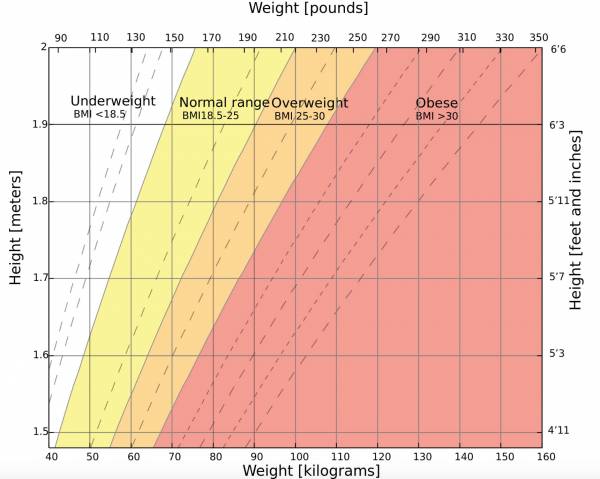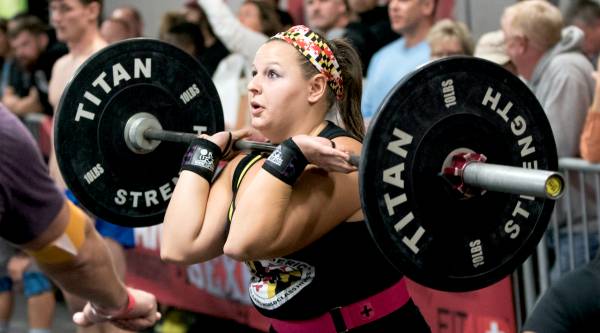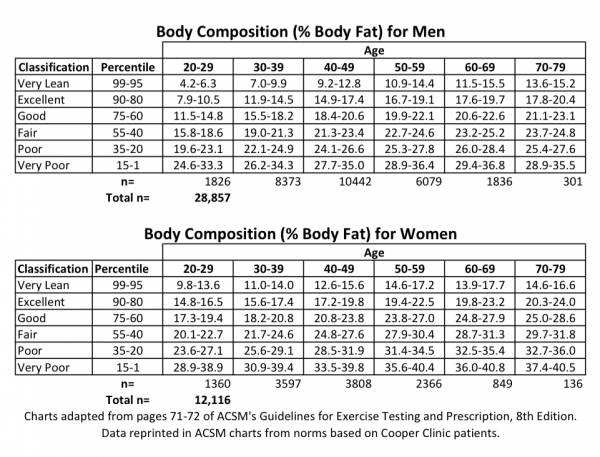One of the most common questions I am asked when I sit down with a client to establish a plan is, “What should I weigh?”
That is understandable amidst the sea of opinions and cultural pressures. It’s so hard to know what weight to aim for and still maintain a healthy body image. We get so focused on the number on a scale that we can lose sight of what really matters at the end of the day—being healthy and able to lead a full life.
One of the most common questions I am asked when I sit down with a client to establish a plan is, “What should I weigh?”
That is understandable amidst the sea of opinions and cultural pressures. It’s so hard to know what weight to aim for and still maintain a healthy body image. We get so focused on the number on a scale that we can lose sight of what really matters at the end of the day—being healthy and able to lead a full life.
That number we so often dread on the scale is only a part of the bigger picture. An ideal and healthy weight is very individual and needs to be treated as such.
The Body Mass Index
One of the most simple (but by no means best) ways of looking at ideal weight is BMI, which is based solely on height and weight. As a formula it looks like this:
You can take the result of this formula and place it into one of four categories: Underweight (BMI <18.5), Normal (18.5-25), Overweight (25-30), and Obese (> 30). You can also use a graph like the one below:

BMI is incredibly simple and easy for the individual to calculate in the comfort and ease of their home, which is why it is so popular. Being simple and well-adopted, however, does not make it the best or most useful way to look at the concept of ideal weight.
The Problem with BMI
While it gives you a rough idea of how you fare and what you should aim for, there is one area where BMI falls terribly short: it fails to take body composition into account.
What this means is that you can have very muscular people (think football players) that, although they have a completely healthy composition, end up in the “overweight” category. You may also find people who have a “normal” BMI, but their composition is less muscular than is healthy, and that alone can lead to cardiovascular health problems.
There are a lot of different sizes and shapes of bodies out there; fitting into a statistical model doesn’t always work. Don’t get me wrong, BMI is a good model to use in a lot of cases, but if you are looking to set specific goals that are unique to you and your body, there is a better method available.
Determine Fat by Measuring It
I’ve hinted at it already. When looking at an “ideal weight” for someone, what we’re really talking about is body composition. It is easy to talk about only weight, as it typically moves in step with composition, but sometimes it doesn’t.
Such is the case with the skinny-fat person, who may look totally skinny but are a little softer on the edges instead of being lean and muscular underneath the clothes. Their weight is good, but their body fat is actually a little high. You have to take composition into account, especially in endurance athletes where catabolic hormones can get out of control at times and cause more fat storage.
So we turn our eyes away from the scale and over to body composition as the starting point. That means, for most people, having a skin-fold analysis done, or using a bioelectrical impedance (BEI) device to measure their composition (less accurate, more finicky). For those with the means and the access, there are several other methods available that are more accurate, but we’ll skip over that for now.
The goal of using composition as a guide lies in finding out two things: lean mass and percentage of body fat.
As an example, let’s say we weigh a typical male, and he comes in at 200lb and we calculate his body composition and his body fat percentage comes in at 30%. That means our two numbers are as follows:
- His lean mass is 140lb. This would be considered all non-fat tissue in the body (muscles, organs, etc.).
- His body fat accounts for 60lb of that weight.
Unless he loses some muscle, this guy just isn’t going to get under 140lb because that would be literally zero percent body fat. In fact, he will probably add a couple pounds of lean muscle along the path depending on how he handles his weight loss approach. That being said, we have the most important part of our calculation figured out: lean mass. This is the absolute starting point and the basis for making ideal weight so much more user-friendly to the individual.

Your total lean mass is the real starting point for finding your ideal weight. [Photo courtesy of: J Perez Imagery]
Finding Your Ideal Weight: The Formula
You can find your ideal weight by figuring out your lean mass, then decide on a body fat percentage or range of percentages that you’d like to be at within the above guidelines. Once you have your range in mind, it is as simple as using the following formula to kick out a goal weight:
Lean body mass (lbs) x (1 + target body fat percentage, as a decimal) = ideal weight
In the case of our 200lb guy, let’s say he wants to be between 12-17% body fat (BF). His situation would look like this:
140 lbs X 1.12 = 156.8 lbs or 140 lbs X 1.17 = 163.8 lbs
So, following the formula, his target “ideal” weight would be 156.8-163.8 pounds.
But how do you decide what percentage(s) to use for this formula? This is where it gets fun. At this point, the idea of an ideal weight often takes different paths depending on your unique perspective. The everyday person just trying to get healthy and look better will have a very different set of goals, at least initially, than someone more athletic looking to push the envelope on performance. Ultimately, it is personal preference.
What Composition Should I Aim to Achieve?
The first step in establishing your unique target weight or weight range is to honestly ask yourself several questions:
- What is most important to me? Health? Performance? Eating what I want when I want?
- How do I want to look and feel?
- Do I like my current amount of muscle mass? Do I have too much or too little for my specific goals? Worded another way: Am I strong enough? Do I have extra muscle mass that doesn’t help with my goals?
- Do I want to put in the effort and be super disciplined to hit really low body composition numbers?
Once you have spent some time with those questions and have some idea of what is valuable to you, you can use several resources to start drafting your specific ideal weight formula. One great, straightforward resource is ACE’s body composition guidelines.

[Chart courtesy of ACE]
The information ACE provides is simple and straightforward. It also pulls out the category of “essential fat” which is the bare minimum needed to maintain health—a great thing to keep in mind. There are very few people who should be aiming for that level of leanness. For most people looking to be healthy and feel good, the “fitness” category is a great place to aim.
One thing the ACE chart does not account for, though, is the changes in our bodies as we age. Our acceptable body fat ranges tend to increase slightly with age. Why is this, you ask? There are three types of fat on the human body. While the subcutaneous (under the skin; what we measure with skin folds) may remain the same, the visceral (around the organs; unmeasured), and intramuscular fats (in between muscle, like a marbled steak; unmeasured) tend to increase as we age, altering the overall body density and adding to the percentage body fat.
To take aging into account, I’d recommend using one of two resources. Keep in mind that in the first, it is still a statistical model, just like BMI, so some older, athletic individuals, might not fit the assumptions as their body density may be underestimated.
The first resource I’d recommend is from the American College of Sports Medicine’s Guidelines for Exercise Testing and Prescription (8th Ed.). This resource breaks the numbers down into percentiles as well as ranges (very lean, excellent, good, fair, poor, very poor). You can see that represented in the charts below.

[Chart obtained from the American College of Sports Medicine]
The final resource worth mentioning is something much more intuitive: photo charts. These are selections of body images that are correlated to specific body compositions. You can use these to get a much better idea of what your body will look like at various levels of body fat. BuiltLean.com has excellent photo charts available for both men and women as well as detailed explanations. I highly recommend checking it out if you are a more visual person.
A Note for the Athletes
With different sports and levels of competition come different demands and body types that excel. This is why you see competitive runners and cyclists that are so stinkin’ skinny. Gravity punishes any extra weight that they carry. A football player, on the other hand, requires more mass to survive the regular beating placed on the body. Different bodies for different needs. This is a whole topic in and of itself.
Putting It All Together
You have all the pieces of the puzzle. You found your ideal weight or weight range. Now what? You have to work on getting there! It would be nice to think that we just lose fat when we lose weight, or that we just gain muscle when we add bulk. But the reality is that both lean and fat mass are changing together, making the whole process more complicated. That’s why measuring regularly is so important.
Measuring on a regular basis (both weight on the scale and percentage body fat) ensures you are meeting both your fat and lean mass goals. You don’t want to be in that situation where you want to lose weight from fat while keeping your lean muscle and find out you are losing both.
It is also hard to be in the position where you are trying to lose weight, but are adding muscle mass simultaneously, resulting in a scale that reads higher than expected despite looking and feeling better. That can really play with your head. That’s why we measure. Objective data is good, and what gets measured tends to get managed, which leads to better and quicker results.
All this being said, ideal weight is kind of up to you, and will depend on your personal goals. There is no magic number or perfect body type. You need to pick the healthy route, what is best for you, and go after it full bore. Don’t let popular opinion tell you what is best for you.
More on body composition and diet: How the Western Diet Triggers Weight Gain






